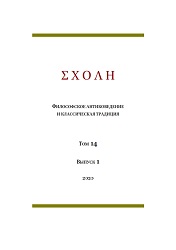Математические аспекты архитектурной логики формообразования римского Пантеона
Mathematical aspects of architectural design logic of Roman Pantheon
Author(s): Andrey Radzyukevich, Gennadi GrigorenkoSubject(s): Architecture, Logic, Ancient World, Analytic Philosophy, Methodology and research technology, History of Art
Published by: Новосибирский государственный университет
Keywords: proportions of Roman Pantheon; laser scan; point cloud; logic of architectural design reconstruction; roman metrology reconstruction;
Summary/Abstract: The paper tests the methodology of architectural and ethnographic research of the object of material culture-a masterpiece of world architecture of the Roman Pantheon. The method involves performing the proportional-metrological analysis of the forms using the results of three-dimensional laser scanning. The sequence of actions allowing receiving extremely reliable dimensional drawings of necessary elements of an architectural monument is presented. The analysis suggests that the design metrological module of the Pantheon was a Roman foot of 0.445 m. A detailed analysis of the size of the rotunda plan made it possible to confirm the hypothesis that the design was based on the use of an integer analogue of the number "PI" - fraction 22/7. In addition, an integer right triangle 5: 12: 13 could be used to construct the right angle and to determine the basic proportions of the elements of the facade of the portico. Apparently, in the process of designing the forms of the Pantheon, the method of harmonizing elements on the basis of the similarity method with a change in their scale was used
Journal: ΣΧΟΛΗ. Философское антиковедение и классическая традиция
- Issue Year: XIV/2020
- Issue No: 1
- Page Range: 226-245
- Page Count: 20
- Language: Russian

